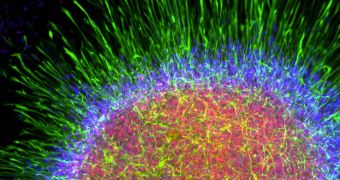For the first time ever, researchers managed to grow brain cells called astrocytes in laboratory settings. This was never done before, even if these cells are the most common type in the brain. However, their significance pales in comparison to that of their neuron cousins.
The latter are the main nerve cells the brain uses to pass on electrical signals from various cortices to different regions of the body. But astrocytes are very important too. Their main role is to protect neurons, acting like bodyguards against disease.
This makes them one of the most important players in the development of neural conditions such as dementia. Despite their important role, they have been largely overlooked by the scientific community, given the fact that they cannot be readily grown in the lab.
It's only now that research groups around the world are beginning to realize the importance of astrocytes. As such, the necessity of being able to grown them artificially has become imperative. And, as is well known, for every demand there is an offer.
“Not a lot of attention has been paid to these cells because human astrocytes have been hard to get. But we can make billions or trillions of them from a single stem cell,” explains scientist Su-Chun Zhang.
The expert, who was a researcher on the new study, holds an appointment at the University of Wisconsin-Madison (UWM), LiveScience reports. “Without the astrocyte, neurons can't function,” the investigator adds in a statement.
“Astrocytes wrap around nerve cells to protect them and keep them healthy. They participate in virtually every function or disorder of the brain,” he adds. As such, studying these small, star-shaped cells is essential for developing new treatments against a wide array of diseases.
In addition to controlling the blood-brain barrier that keeps invaders out of the brain, astrocytes also regulate neural blood flow, and clean up the remains of neural communication molecules known as neurotransmitters.
In a paper published in the May 22 issue of the top scientific journal Nature Biotechnology, Zhang and his team explain that they used both embryonic and adult stem cells to obtain astrocytes in the lab.

 14 DAY TRIAL //
14 DAY TRIAL //